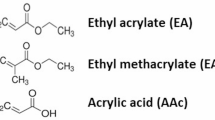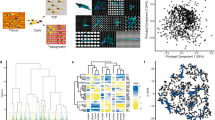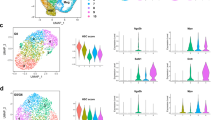Abstract
Expansion of human stem cells before cell therapy is typically performed at 20% O2. Growth in these pro-oxidative conditions can lead to oxidative stress and genetic instability. Here, we demonstrate that culture of human mesenchymal stem cells at lower, physiological O2 concentrations significantly increases lifespan, limiting oxidative stress, DNA damage, telomere shortening and chromosomal aberrations. Our gene expression and bioenergetic data strongly suggest that growth at reduced oxygen tensions favors a natural metabolic state of increased glycolysis and reduced oxidative phosphorylation. We propose that this balance is disturbed at 20% O2, resulting in abnormally increased levels of oxidative stress. These observations indicate that bioenergetic pathways are intertwined with the control of lifespan and decisively influence the genetic stability of human primary stem cells. We conclude that stem cells for human therapy should be grown under low oxygen conditions to increase biosafety.
Similar content being viewed by others
Log in or create a free account to read this content
Gain free access to this article, as well as selected content from this journal and more on nature.com
or
Abbreviations
- ECAR:
-
extra cellular acidification rate
- FDR:
-
false discovery rate
- OCR:
-
oxygen consumption rate
- OXPHOS:
-
oxidative phosphorylation
- TRAP:
-
telomere repeat amplification protocol
References
Siegel G, Schafer R, Dazzi F . The immunosuppressive properties of mesenchymal stem cells. Transplantation 2009; 87 (9 Suppl): S45–S49.
Miyahara Y, Nagaya N, Kataoka M, Yanagawa B, Tanaka K, Hao H et al. Monolayered mesenchymal stem cells repair scarred myocardium after myocardial infarction. Nat Med 2006; 12: 459–465.
Vaupel P, Okunieff P, Neuringer LJ . Blood flow, tissue oxygenation, pH distribution, and energy metabolism of murine mammary adenocarcinomas during growth. Adv Exp Med Biol 1989; 248: 835–845.
Fischer B, Bavister BD . Oxygen tension in the oviduct and uterus of rhesus monkeys, hamsters and rabbits. J Reprod Fertil 1993; 99: 673–679.
Parrinello S, Samper E, Krtolica A, Goldstein J, Melov S, Campisi J . Oxygen sensitivity severely limits the replicative lifespan of murine fibroblasts. Nat Cell Biol 2003; 5: 741–747.
Chen Q, Fischer A, Reagan JD, Yan LJ, Ames BN . Oxidative DNA damage and senescence of human diploid fibroblast cells. Proc Natl Acad Sci USA 1995; 92: 4337–4341.
Busuttil RA, Rubio M, Dolle ME, Campisi J, Vijg J . Oxygen accelerates the accumulation of mutations during the senescence and immortalization of murine cells in culture. Aging Cell 2003; 2: 287–294.
Fehrer C, Brunauer R, Laschober G, Unterluggauer H, Reitinger S, Kloss F et al. Reduced oxygen tension attenuates differentiation capacity of human mesenchymal stem cells and prolongs their lifespan. Aging Cell 2007; 6: 745–757.
Li TS, Marban E . Physiological levels of reactive oxygen species are required to maintain genomic stability in stem cells. Stem Cells 2010; 28: 1178–1185.
Forsyth NR, Musio A, Vezzoni P, Simpson AH, Noble BS, McWhir J . Physiologic oxygen enhances human embryonic stem cell clonal recovery and reduces chromosomal abnormalities. Cloning Stem Cells 2006; 8: 16–23.
Giaccia AJ, Simon MC, Johnson R . The biology of hypoxia: the role of oxygen sensing in development, normal function, and disease. Genes Dev 2004; 18: 2183–2194.
Schofield CJ, Ratcliffe PJ . Oxygen sensing by HIF hydroxylases. Nat Rev Mol Cell Biol 2004; 5: 343–354.
Papandreou I, Cairns RA, Fontana L, Lim AL, Denko NC . HIF-1 mediates adaptation to hypoxia by actively downregulating mitochondrial oxygen consumption. Cell Metab 2006; 3: 187–197.
Kim JW, Tchernyshyov I, Semenza GL, Dang CV . HIF-1-mediated expression of pyruvate dehydrogenase kinase: a metabolic switch required for cellular adaptation to hypoxia. Cell Metab 2006; 3: 177–185.
Lansdorp PM, Verwoerd NP, van de Rijke FM, Dragowska V, Little MT, Dirks RW et al. Heterogeneity in telomere length of human chromosomes. Hum Mol Genet 1996; 5: 685–691.
Herbert BS, Hochreiter AE, Wright WE, Shay JW . Nonradioactive detection of telomerase activity using the telomeric repeat amplification protocol. Nat Protoc 2006; 1: 1583–1590.
von Zglinicki T, Pilger R, Sitte N . Accumulation of single-strand breaks is the major cause of telomere shortening in human fibroblasts. Free Radic Biol Med 2000; 28: 64–74.
von Zglinicki T . Oxidative stress shortens telomeres. Trends Biochem Sci 2002; 27: 339–344.
Schultz LB, Chehab NH, Malikzay A, Halazonetis TD . p53 binding protein 1 (53BP1) is an early participant in the cellular response to DNA double-strand breaks. J Cell Biol 2000; 151: 1381–1390.
Epstein CJ . Cell size, nuclear content, and the development of polyploidy in the Mammalian liver. Proc Natl Acad Sci USA 1967; 57: 327–334.
Ichikawa D, Hashimoto N, Hoshima M, Yamaguchi T, Sawai K, Nakamura Y et al. Analysis of numerical aberrations of specific chromosomes by fluorescent in situ hybridization as a diagnostic tool in breast cancer. Cancer 1996; 77: 2064–2069.
Persons DL, Robinson RA, Hsu PH, Seelig SA, Borell TJ, Hartmann LC et al. Chromosome-specific aneusomy in carcinoma of the breast. Clin Cancer Res 1996; 2: 883–888.
Mukherjee AB, Costello C . Aneuploidy analysis in fibroblasts of human premature aging syndromes by FISH during in vitro cellular aging. Mech Ageing Dev 1998; 103: 209–222.
Mukherjee AB, Alejandro J, Payne S, Thomas S . Age-related aneuploidy analysis of human blood cells in vivo by fluorescence in situ hybridization (FISH). Mech Ageing Dev 1996; 90: 145–156.
Geigl JB, Langer S, Barwisch S, Pfleghaar K, Lederer G, Speicher MR . Analysis of gene expression patterns and chromosomal changes associated with aging. Cancer Res 2004; 64: 8550–8557.
Giaccia A, Siim BG, Johnson RS . HIF-1 as a target for drug development. Nat Rev Drug Discov 2003; 2: 803–811.
Warburg O . On respiratory impairment in cancer cells. Science 1956; 124: 269–270.
Baker DE, Harrison NJ, Maltby E, Smith K, Moore HD, Shaw PJ et al. Adaptation to culture of human embryonic stem cells and oncogenesis in vivo. Nat Biotechnol 2007; 25: 207–215.
von Zglinicki T, Saretzki G, Docke W, Lotze C . Mild hyperoxia shortens telomeres and inhibits proliferation of fibroblasts: a model for senescence? Exp Cell Res 1995; 220: 186–193.
Bruick RK . Expression of the gene encoding the proapoptotic Nip3 protein is induced by hypoxia. Proc Natl Acad Sci USA 2000; 97: 9082–9087.
Coppe JP, Patil CK, Rodier F, Sun Y, Munoz DP, Goldstein J et al. Senescence-associated secretory phenotypes reveal cell-nonautonomous functions of oncogenic RAS and the p53 tumor suppressor. PLoS Biol 2008; 6: 2853–2868.
Kondoh H, Lleonart ME, Gil J, Wang J, Degan P, Peters G et al. Glycolytic enzymes can modulate cellular life span. Cancer Res 2005; 65: 177–185.
Samper E, Flores JM, Blasco MA . Restoration of telomerase activity rescues chromosomal instability and premature aging in Terc−/− mice with short telomeres. EMBO Rep 2001; 2: 800–807.
Rubio MA, Kim SH, Campisi J . Reversible manipulation of telomerase expression and telomere length. Implications for the ionizing radiation response and replicative senescence of human cells. J Biol Chem 2002; 277: 28609–28617.
Bolstad BM, Irizarry RA, Astrand M, Speed TP . A comparison of normalization methods for high density oligonucleotide array data based on variance and bias. Bioinformatics 2003; 19: 185–193.
Smyth GK . Linear models and empirical bayes methods for assessing differential expression in microarray experiments. Stat Appl Genet Mol Biol 2004; 3: Article3.
Storey JD, Tibshirani R . Statistical significance for genomewide studies. Proc Natl Acad Sci USA 2003; 100: 9440–9445.
Falcon S, Gentleman R . Using GOstats to test gene lists for GO term association. Bioinformatics 2007; 23: 257–258.
Levine RL, Williams JA, Stadtman ER, Shacter E . Carbonyl assays for determination of oxidatively modified proteins. Methods Enzymol 1994; 233: 346–357.
Wong SH, Knight JA, Hopfer SM, Zaharia O, Leach Jr CN, Sunderman Jr FW . Lipoperoxides in plasma as measured by liquid-chromatographic separation of malondialdehyde-thiobarbituric acid adduct. Clin Chem 1987; 33 (2 Part 1): 214–220.
Acknowledgements
We are indebted to Dr. Judith Campisi (Buck Institute for Age Research) for providing the telomere length control cells and the hTert lentiviral vector, to Jose Manuel Ligos and the Cytometry Unit (CNIC) for advice on FACS analysis, Antonio Diez-Juan and Kenneth McCreath for critical reading of the paper, Marta Ramón (CNIC) for secretarial assistance and Simon Bartlett (CNIC) for editorial support. This work was supported by grants to AB from the Ministry of Science and Innovation (SAF 2008-02099; PLE2009-0147 and PSE-010000-2009-3), the Comunidad Autónoma de Madrid (P-BIO-0306-2006) and the Red de Terapia Celular del Instituto de Salud Carlos III (TerCel); to ES from the Fundación Mutua Madrileña, the Ministry of Education (Ramon y Cajal program), and the Ministry of Health (FIS PI071023) to JAE from the Ministry of Science and Innovation (SAF 2009-08007 and CSD2007-00020). JCE is currently a predoctoral fellow funded by TerCel. The CNIC is supported by the Spanish Ministry of Science and Innovation and the Pro-CNIC Foundation.
Author information
Authors and Affiliations
Corresponding author
Ethics declarations
Competing interests
The authors declare no conflict of interest.
Additional information
Edited by R De Maria
Supplementary Information accompanies the paper on Cell Death and Differentiation website
Rights and permissions
About this article
Cite this article
Estrada, J., Albo, C., Benguría, A. et al. Culture of human mesenchymal stem cells at low oxygen tension improves growth and genetic stability by activating glycolysis. Cell Death Differ 19, 743–755 (2012). https://doi.org/10.1038/cdd.2011.172
Received:
Revised:
Accepted:
Published:
Issue date:
DOI: https://doi.org/10.1038/cdd.2011.172
Keywords
This article is cited by
-
Hypoxia and interleukin-1-primed mesenchymal stem/stromal cells as novel therapy for stroke
Human Cell (2023)
-
Potential pre-activation strategies for improving therapeutic efficacy of mesenchymal stem cells: current status and future prospects
Stem Cell Research & Therapy (2022)
-
Potential mechanisms and therapeutic targets of mesenchymal stem cell transplantation for ischemic stroke
Stem Cell Research & Therapy (2022)
-
Development of a novel feeding regime for large scale production of human umbilical cord mesenchymal stem/stromal cells
Cytotechnology (2022)
-
Surfing the clinical trials of mesenchymal stem cell therapy in ischemic cardiomyopathy
Stem Cell Research & Therapy (2021)



